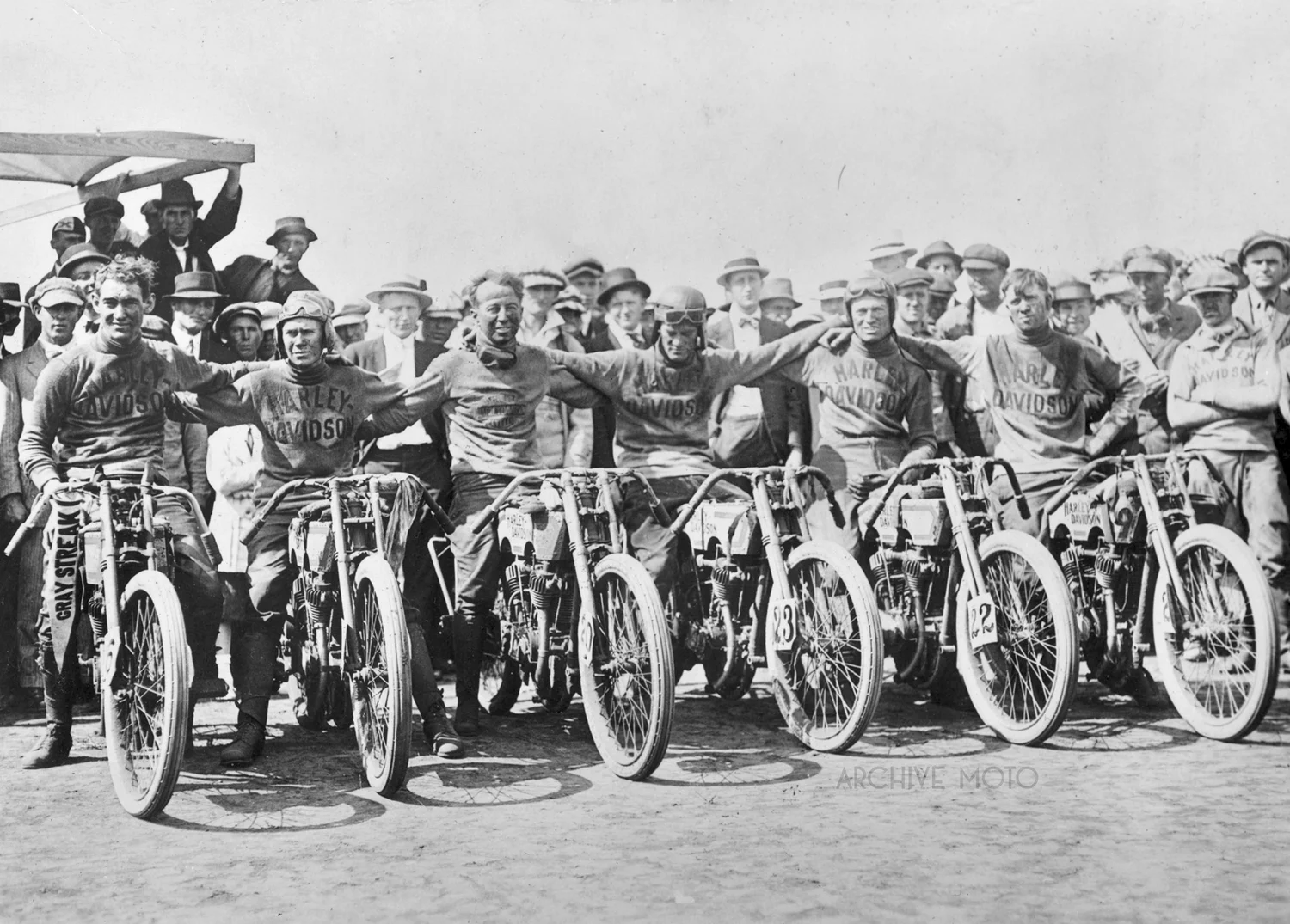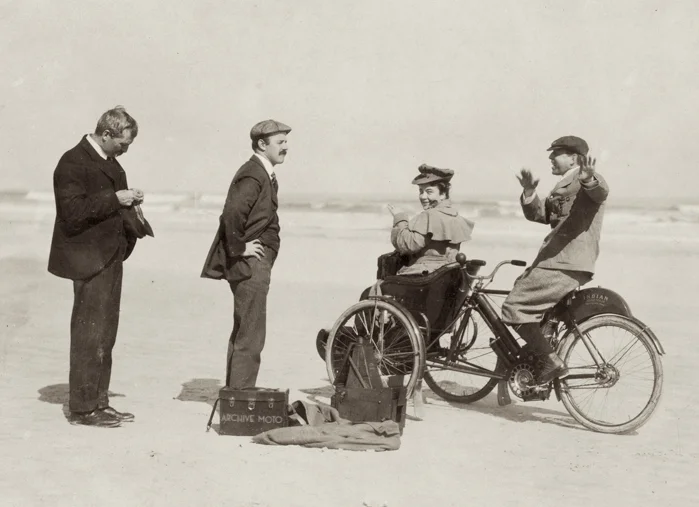Scale. When we look back and try to imagine what it must have been like sit atop one of America’s infamous board track motordromes it is often the scale of the venue which eludes us. We have little to nothing like them today, and at the height of their popularity in the early teens, there were little else like them in the world. Another aspect of the motordrome which tends to trip up our daydreams is the variety in board track design, which produced a general congealing of all wooden racing tracks under the single name of motordrome over time. From the the first circular motordromes to the massive oval speedways, and even the small portable wall rider thrill shows have all, overtime, been referred to as motordromes. The truth is, that when most folks imagine board track racing we tend to clump together a version of all three types of venues.
New York photographer and photography supply dealer Thomas K. Hastings, and his lovely bride determined to take a bit of an adventure in January of 1906. An avid automobile enthusiast since the turn of the 20th century, Hastings had about enough of the large and finicky European touring cars by the time Oscar Hedstrom and George Hendee released their Indian Tri-Car three-wheeler in 1906. The design was relatively simple, a throwback to the earliest days of wheeled personal transportation experimentation, reintroduced to America in 1906 with the refinement that only Indian could produce. The machine was made up of a standard production model with a 3 1/2 HP engine, rigged up to a forward-facing two-wheeled, comfortably upholstered chair assembly.
A crowd gathers to meet America’s brightest star motorcycle racer Charlie “Fearless” Balke in front of the Sacramento Excelsior dealership in late October, 1911. Mr. William A. Langley, who stands next to his wife Elma in the grand hat had operated his umbrella repair and bicycle shop at 1025 10th Street since 1907 and was one of the first agents selected to represent the Excelsior Auto-Cycle. Langley was an avid motorcyclist and traveler, his spitfire wife Elma joining him in the saddle on most every adventure. He was an active member of the local motorcycle club and upon acquiring his Excelsior franchise he wasted no time organizing and promoting races at nearby Agriculture Park, not to be confused with the old track of the same name in Los Angeles.
During my career as a motorcyclist I have been through many interesting experiences, some of them amusing, some rather startling—owing to a rather daring streak in my makeup. But all of them fade into comparative insignificance when I think of one trip I made through a sparsely settled district in Montana early in 1912. That journey stands out as the great adventure of my life. Even now when I think of it my hair has a habit of standing up straight, and cool little chills turkey-trot up and down my spine. To begin at the beginning and make a long story as short as possible, it is probably sufficient to say that my home is in New Jersey, which is a pretty definite location when one is speaking of the United States. During the summer of 1911, my friend and companion on many a motorcycle trip, Charlie Morton, removed to a lumbering camp about fifty or sixty miles from Livingston, Montana, being somewhere in the general neighborhood of Gulch City. Before leaving he made me promise that I would visit him as soon as it could conveniently be arranged and that I should make the trip on a motorcycle.





